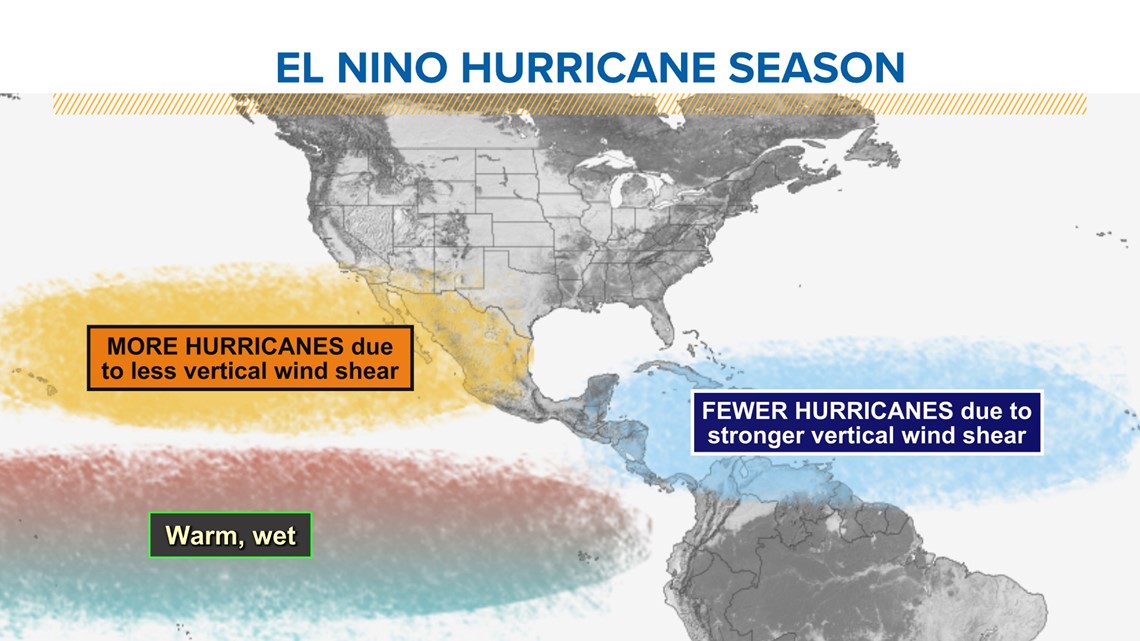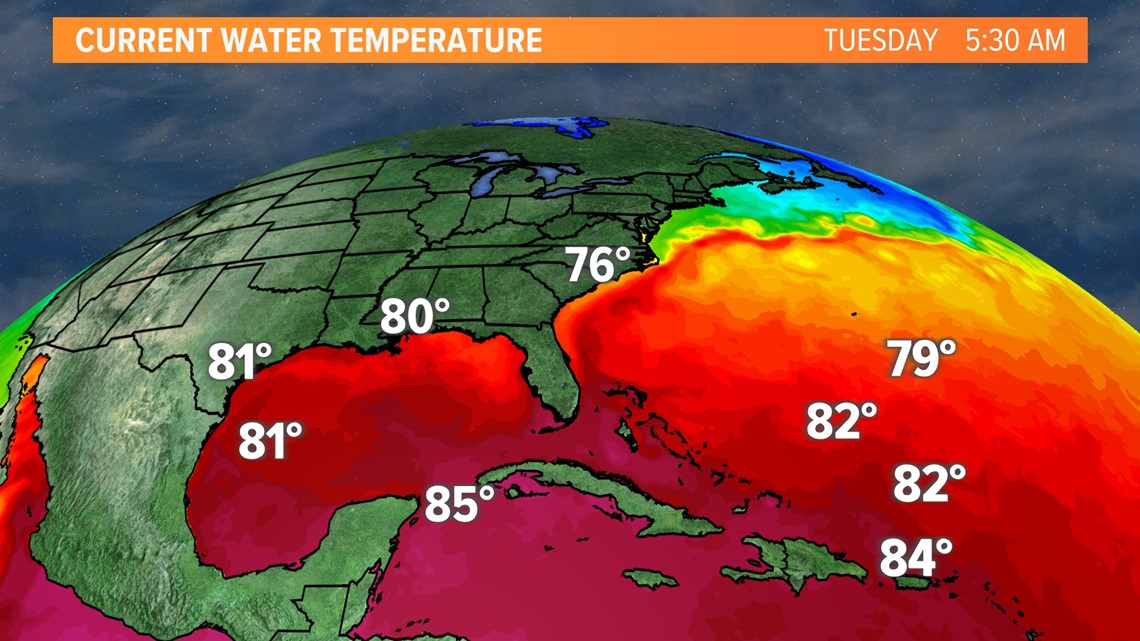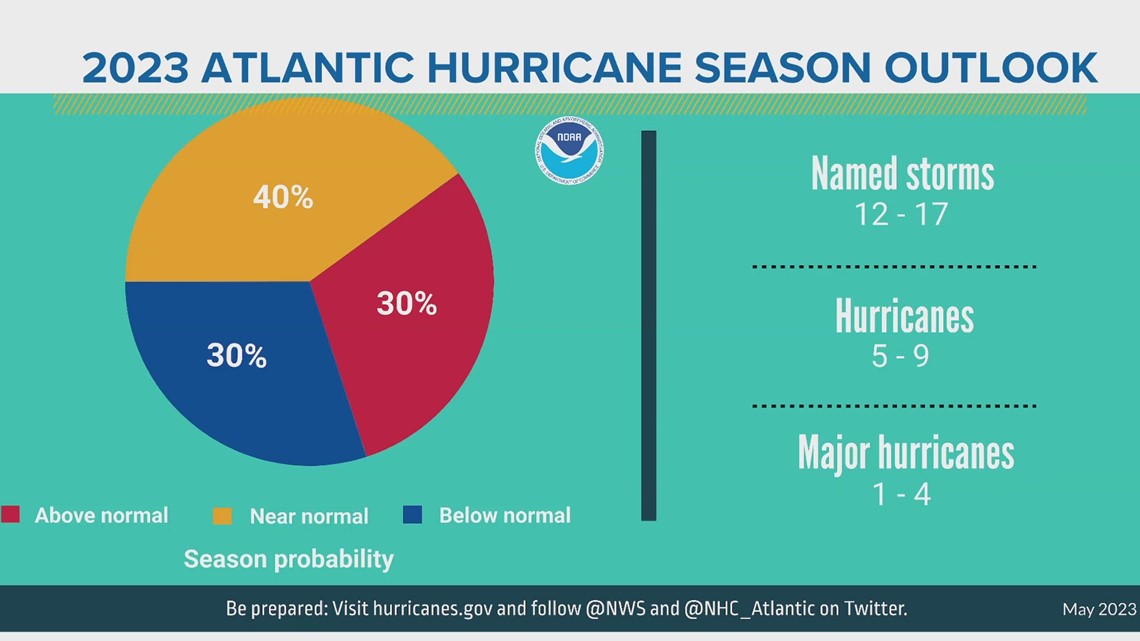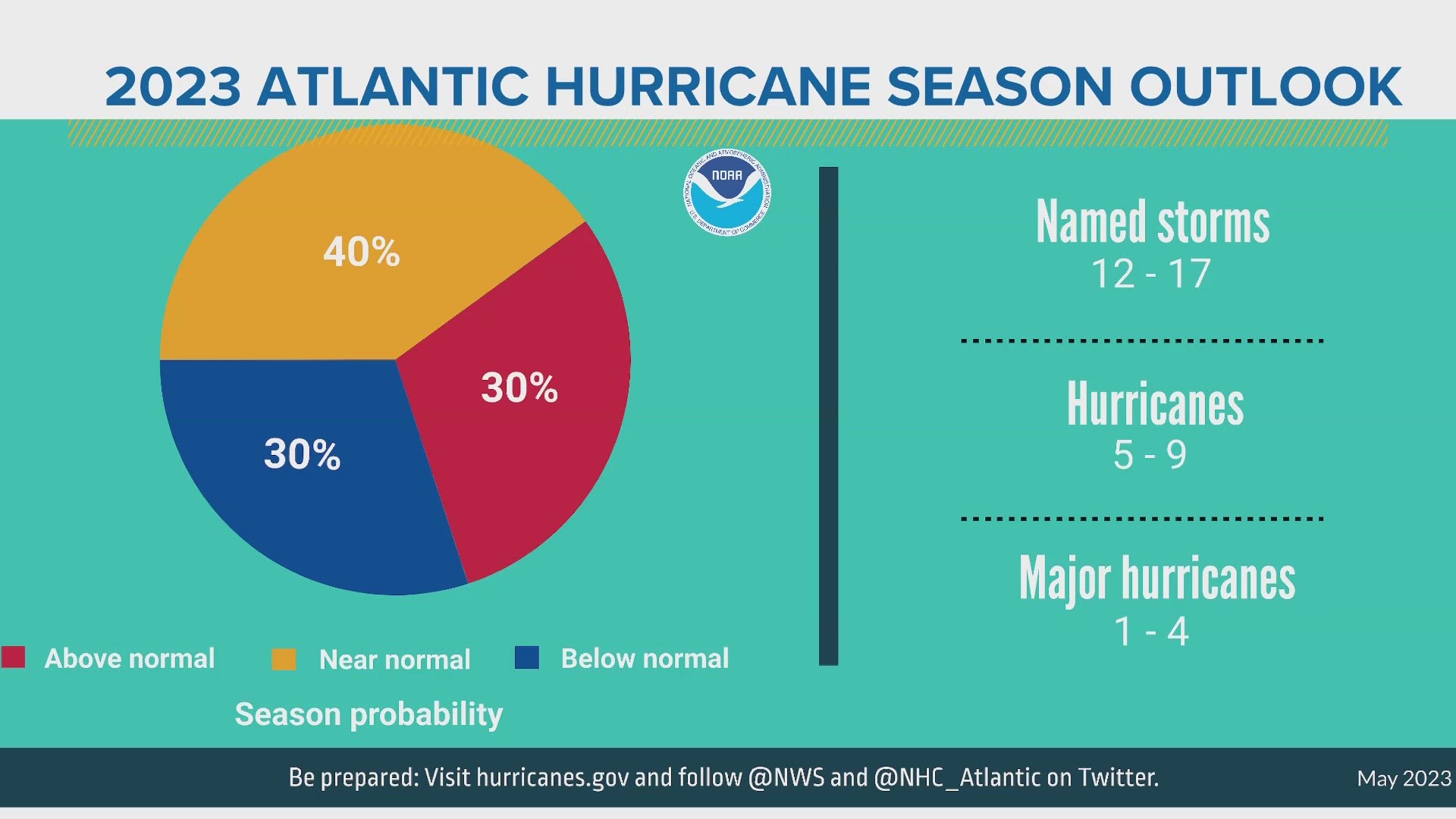MAINE, USA — Hurricanes generally aren't a major player in the weather here in Maine, but we still get some of the remnants of these storms.
The National Oceanic Atmospheric Administration's Climate Prediction Center has issued its outlook for the 2023 Atlantic hurricane season. There are a few different factors that are competing to either promote or suppress hurricane activity.
The main factor that is suppressing hurricane activity in the Atlantic basin is El Nino. On the other hand, sea surface temperatures are warmer than normal, which aides hurricane development. There is also potential for an above normal west African monsoon, which helps seed hurricanes.


There is a high probability for El Nino to develop this summer, which would give us fewer hurricanes. The storm structure of a hurricane develops vertically as it strengthens. When vertical wind shear is stronger, it can limit the strength of a hurricane because it can essentially chop off the top of the hurricane.


On the other hand, sea surface temperatures are warmer, which is fuel for a hurricane. Parts of the Caribbean, Atlantic, and Gulf of Mexico have already warmed up into the 80s. We generally need sea surface temperatures north of 80 degrees for tropical development. These waters are already warm and still have all summer to continue to do the same.


So what does this all mean? The different factors will even each other out, meaning we should see a near normal hurricane season. That means 12-17 named storms, 5-9 becoming hurricanes, and 1-4 of those hurricanes being a category 3+ storm.


- Aaron

